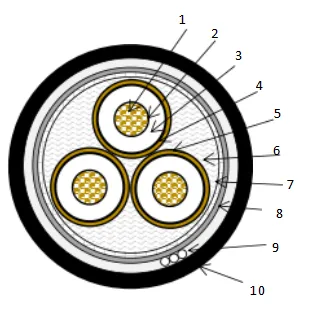9 月 . 05, 2024 00:42 Back to list
foot valve
Understanding Foot Valves A Key Component in Pump Systems
Foot valves play a crucial role in various fluid transfer and pumping systems, especially in applications involving water and wastewater management. These simple yet highly effective devices are installed at the bottom of a suction line, allowing for the regulation of fluid flow into pumps while preventing backflow. This article will explore the function, types, installation, and maintenance of foot valves to illuminate their importance in hydraulic systems.
Function of Foot Valves
Foot valves serve primarily to maintain the priming of a pump. When a pump is turned off, it can lose its prime due to gravity and other factors causing the fluid in the suction line to drain back into the source. A foot valve, equipped with a strainer or mesh, retains the liquid in the suction line, ensuring that the pump starts effectively without the need for re-priming. This feature is especially advantageous in applications where the pump is frequently turned on and off, reducing wear and tear and increasing efficiency.
Another vital role of foot valves is to protect pumps from debris and contaminants. The attached strainer allows water to enter while filtering out particles that could potentially damage the pump or impede its performance. This protective mechanism extends the lifespan of the pump and reduces maintenance costs.
Types of Foot Valves
Foot valves come in a variety of designs, primarily categorized into two types threaded and flanged. Threaded foot valves are suitable for smaller pipes and provide a compact option for many installations. On the other hand, flanged foot valves are preferable for larger systems, allowing for easy integration into existing piping.
foot valve

Additionally, foot valves can be made from different materials depending on their intended use. Common materials include brass, stainless steel, and plastic. Each material has its advantages, such as corrosion resistance or weight considerations, making it essential to choose the right type based on the chemical properties of the fluid being pumped.
Installation and Maintenance
Proper installation is vital for the effective operation of foot valves. It is typically installed vertically at the lowest point of the suction line, submerged in the fluid source. It is crucial that the foot valve is correctly sealed to prevent air leaks, as air can disrupt the system's efficiency. A professional installer should ensure that the orientation and placement comply with manufacturer specifications and best practices.
Maintenance of foot valves involves regular inspections to check for signs of wear and tear or clogging due to debris accumulation. It is advisable to clean the strainer periodically and replace the foot valve if any serious damage or corrosion is detected. This proactive approach helps maintain the efficiency of the entire pumping system and assures the longevity of the equipment.
Conclusion
Foot valves are indispensable components in many hydraulic systems, providing essential functions that enhance the efficiency and reliability of pumps. Understanding their operation, types, and maintenance is key for anyone involved in fluid management or pumping systems. As industries continue to evolve, recognizing the importance of such simple devices in complex systems will remain crucial for effective water management, environmental protection, and infrastructure development. Whether in agriculture, construction, or municipal water systems, a well-functioning foot valve is integral to successful fluid transfer operations.
Share
-
Understanding the Differences Between Wafer Type Butterfly Valve and Lugged Butterfly ValveNewsOct.25,2024
-
The Efficiency of Wafer Type Butterfly Valve and Lugged Butterfly ValveNewsOct.25,2024
-
The Ultimate Guide to Industrial Swing Check Valve: Performance, Installation, and MaintenanceNewsOct.25,2024
-
Superior Performance with Industrial Swing Check Valve: The Essential Valve for Any SystemNewsOct.25,2024
-
Industrial Swing Check Valve: The Ideal Solution for Flow ControlNewsOct.25,2024
-
You Need to Know About Industrial Swing Check Valve: Functionality, Scope, and PerformanceNewsOct.25,2024